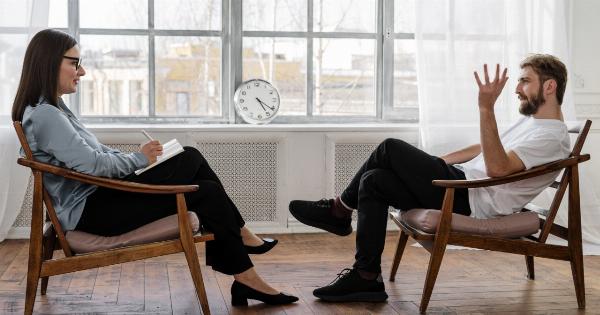Diabetes is a chronic condition that affects millions of people worldwide. It is characterized by the body’s inability to regulate blood sugar levels, leading to a variety of symptoms and complications.
One lesser-known symptom associated with diabetes is sweet breath, also known as fruity breath odor. This distinct odor can be a sign of a serious condition called diabetic ketoacidosis (DKA). In this article, we will explore what sweet breath means for diabetes patients and the importance of recognizing and treating DKA promptly.
Understanding Sweet Breath and Diabetic Ketoacidosis (DKA)
Sweet breath, or fruity breath odor, occurs due to the presence of high levels of ketones in the body. Ketones are byproducts of the breakdown of fat for energy when glucose is not readily available to cells.
In diabetes patients, elevated blood sugar levels can prevent glucose from entering cells properly, leading to a shortage of energy. As a result, the body starts breaking down fat for fuel, producing ketones as a byproduct.
In normal circumstances, the body can efficiently convert ketones into energy or eliminate them through urine. However, when ketone levels rise too high, it can lead to a condition called diabetic ketoacidosis (DKA).
DKA is a severe and potentially life-threatening complication of diabetes that requires immediate medical attention.
Causes and Risk Factors of Diabetic Ketoacidosis (DKA)
DKA is most commonly seen in people with type 1 diabetes, although it can also occur in individuals with type 2 diabetes under certain circumstances. The condition arises due to a combination of factors, including:.
- Lack of insulin: Without sufficient insulin, the body cannot utilize glucose effectively, leading to increased fat breakdown and ketone production.
- Missed insulin doses: Skipping or inadequate administration of insulin medication can contribute to the development of DKA.
- Infection or illness: Infections or illnesses, such as pneumonia or urinary tract infections, can trigger DKA by releasing stress hormones that increase blood sugar levels.
- Poor diabetes management: Failure to monitor blood sugar levels regularly, not following a proper meal plan, or neglecting overall diabetes self-care can increase the risk of DKA.
- Physical or emotional stress: Any form of physical or emotional stress can disrupt blood sugar control and potentially lead to DKA.
Recognizing Sweet Breath and Other Symptoms of DKA
One of the key indicators of DKA is the presence of sweet or fruity breath odor. However, it is essential to note that sweet breath alone does not confirm the presence of DKA, as it can occur due to other causes unrelated to diabetes.
Nevertheless, when sweet breath is accompanied by other symptoms such as:.
- Excessive thirst and frequent urination
- Abdominal pain and cramping
- Nausea and vomiting
- Fatigue and weakness
- Shortness of breath
- Confusion or difficulty concentrating
If you or someone you know with diabetes experience these symptoms, it is crucial to seek immediate medical attention as DKA may be present.
Diagnosis and Treatment of Diabetic Ketoacidosis (DKA)
Diagnosing DKA involves a combination of medical history evaluation, physical examination, and laboratory tests.
Physicians typically measure blood glucose and ketone levels, analyze blood electrolyte levels, and perform additional tests to determine the severity of DKA and identify any underlying causes or complications.
The primary treatment goal for DKA is to bring blood sugar levels back to normal and correct the imbalance of electrolytes in the body. Treatment often includes:.
- Fluid replacement: Intravenous fluids are administered to restore hydration and address electrolyte imbalances.
- Insulin therapy: Regular insulin is given intravenously to lower blood sugar levels and stop the production of ketones.
- Treatment of underlying causes: If an infection or other triggering factor is identified, appropriate treatment is initiated.
- Monitoring and close observation: Patients with DKA are closely monitored for changes in blood sugar, ketone levels, electrolytes, and overall clinical status.
Once stabilized, individuals with diabetes who have experienced DKA should work closely with their healthcare team to identify and address any factors that contributed to the development of the condition.
This may involve adjusting insulin dosage, improving diabetes management strategies, or addressing other underlying health issues.
Prevention and Management of DKA in Diabetes Patients
Preventing DKA requires diligent diabetes management and proactive self-care. The following measures can help reduce the risk of developing DKA:.
- Regular blood sugar monitoring: Keep track of blood sugar levels throughout the day to detect any abnormalities early on.
- Consistent insulin administration: Take insulin injections or use insulin pumps as prescribed by healthcare professionals, ensuring adherence to the recommended dosage.
- Follow a proper meal plan: Maintain a healthy diet, consume balanced meals at regular intervals, and monitor carbohydrate intake to help regulate blood sugar levels.
- Stay hydrated: Drink plenty of water and fluids, and seek appropriate medical attention if vomiting or diarrhea occurs.
- Manage stress levels: Employ stress management techniques, such as exercise, deep breathing, or meditation, to keep stress in check and prevent its negative impact on blood sugar control.
It is important for individuals with diabetes to be aware of the potential risks associated with DKA and take proactive steps to prevent its occurrence.
Regular communication with healthcare providers and diabetes educators can provide valuable guidance and support in managing diabetes effectively.
Conclusion
Sweet breath, or fruity breath odor, can be an indicator of diabetic ketoacidosis (DKA), a severe complication of diabetes.
DKA occurs when the body lacks sufficient insulin to utilize glucose effectively, leading to the breakdown of fat for energy and the production of ketones. While sweet breath alone does not confirm the presence of DKA, its presence along with other symptoms like excessive thirst, abdominal pain, and confusion should prompt individuals to seek immediate medical attention.
Diagnosing DKA involves laboratory tests, and treatment typically includes fluid replacement, insulin therapy, and addressing underlying causes. Prevention of DKA requires consistent diabetes management practices, including regular blood sugar monitoring, insulin administration, following a meal plan, staying hydrated, and managing stress levels.
By taking proactive measures and working closely with healthcare professionals, individuals with diabetes can minimize the risk of developing DKA and maintain better overall health.




























